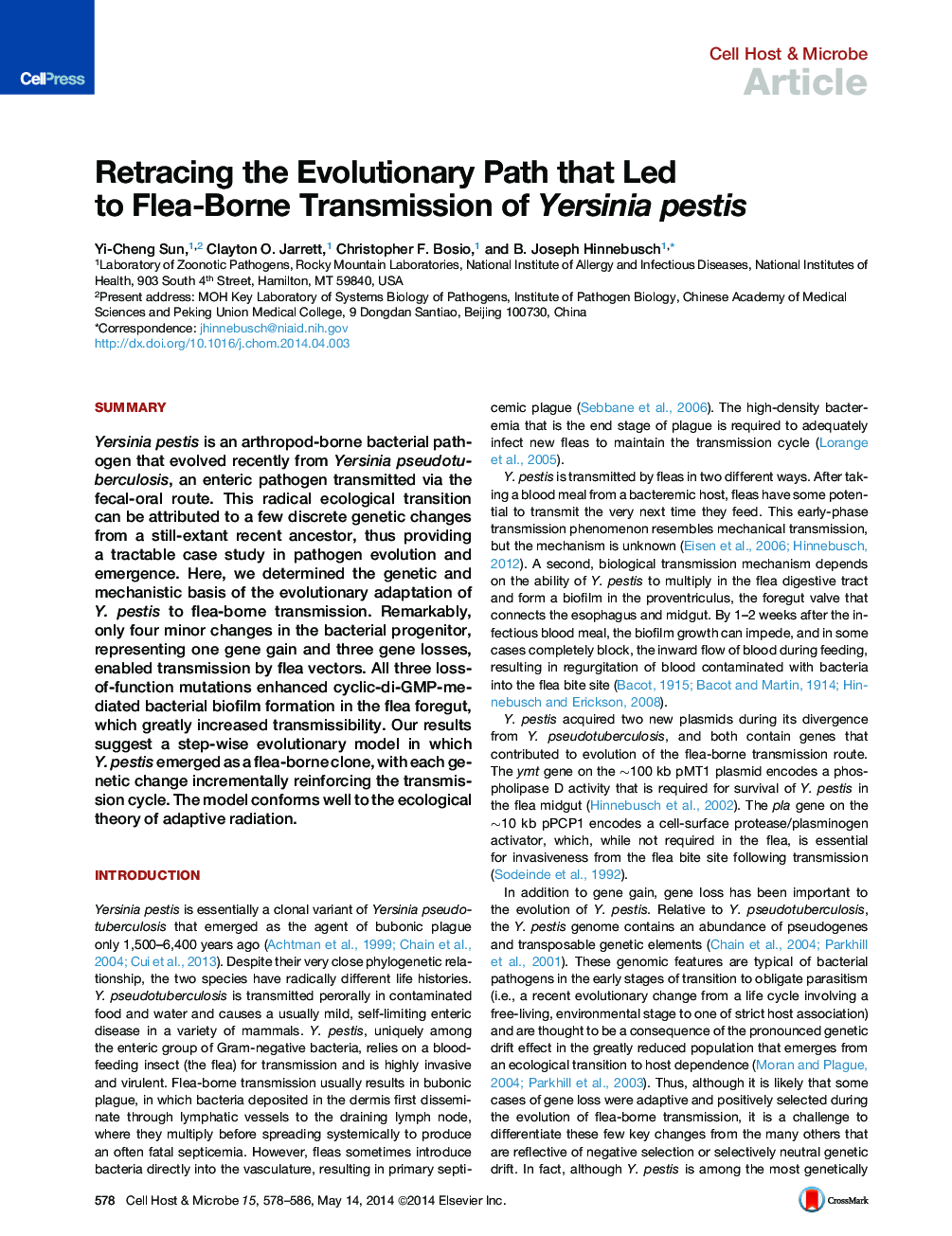| Article ID | Journal | Published Year | Pages | File Type |
|---|---|---|---|---|
| 4360996 | Cell Host & Microbe | 2014 | 9 Pages |
•Y. pseudotuberculosis causes only a benign lower digestive tract infection in fleas•Gain of ymt encoding a phospholipase D activity allows flea midgut infection•Loss of three genes enhances biofilm formation in the flea to promote transmissibility•Four gene changes occurring early in Y. pestis evolution enabled flea-borne transmission
SummaryYersinia pestis is an arthropod-borne bacterial pathogen that evolved recently from Yersinia pseudotuberculosis, an enteric pathogen transmitted via the fecal-oral route. This radical ecological transition can be attributed to a few discrete genetic changes from a still-extant recent ancestor, thus providing a tractable case study in pathogen evolution and emergence. Here, we determined the genetic and mechanistic basis of the evolutionary adaptation of Y. pestis to flea-borne transmission. Remarkably, only four minor changes in the bacterial progenitor, representing one gene gain and three gene losses, enabled transmission by flea vectors. All three loss-of-function mutations enhanced cyclic-di-GMP-mediated bacterial biofilm formation in the flea foregut, which greatly increased transmissibility. Our results suggest a step-wise evolutionary model in which Y. pestis emerged as a flea-borne clone, with each genetic change incrementally reinforcing the transmission cycle. The model conforms well to the ecological theory of adaptive radiation.
Graphical AbstractFigure optionsDownload full-size imageDownload high-quality image (197 K)Download as PowerPoint slide
